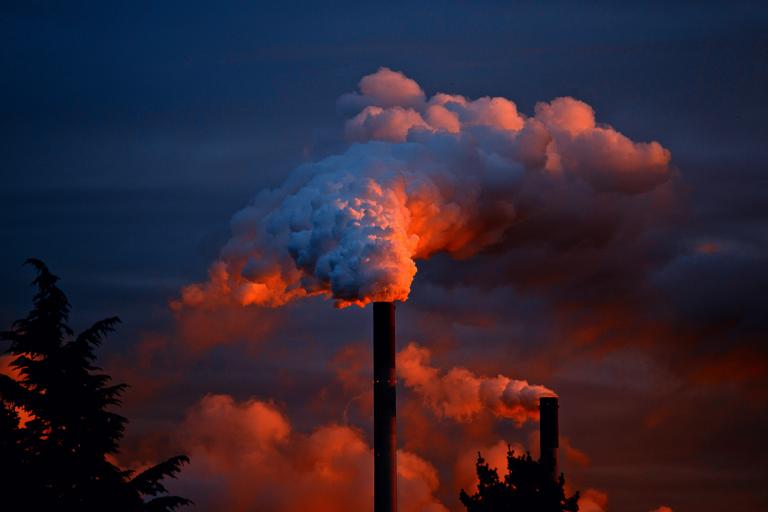Greenhouse gas monitoring supports Earth observations

A planned global greenhouse gas monitoring infrastructure would greatly enhance Earth observations and play a pivotal role in informing international efforts to cut greenhouse gas emissions, according to top WMO scientists at the UN climate conference, COP27.
WMO has been explaining the potential value of a framework for sustained, internationally coordinated global greenhouse gas monitoring to negotiators. The aim is to get official recognition of the approach in the UN Framework Convention on Climate Change (UNFCCC) process, in conjunction with the already established Global Climate Observing System and State of the Global Climate reports.

At the moment, information provided to the UNFCCC to support mitigation action
relies solely on highly standardized reporting by countries. And even though greenhouse gas concentrations are observed in some places, these observations are often supported by research funding.
Existing international exchange of observations of greenhouse gases and the use of them for routine model-based monitoring is significantly behind the practices used in weather prediction.
This means that there is still considerable uncertainty about distribution and variability of greenhouse gas fluxes – including the amount of carbon exchanged between the oceans, the atmosphere and the land surface due to the combination of natural and anthropogenic processes. Poorly observed areas include Africa, South America and substantial part of Asia, as well as observations over the ocean and in high latitudes represent a particular challenge.
“Rather than relying only on national reporting of emissions, it would be better to complement this with monitoring based on both ground-based measurements, satellites and modelling tools,” WMO Secretary-General Prof. Petteri Taalas told Earth Information Day at COP. “For us, Earth observations are not opinion-driven they are fact-driven,” he said.
The need for such a monitoring framework was underlined by the data published in WMO’s Greenhouse Gas Bulletin, which showed that methane concentrations in 2021 jumped by the highest rate since measurements began. The exact reasons for this – whether it is due to natural variability or human activities, or a combination – are unclear.
The need for action is undisputable.

The Global Carbon Budget, issued on 11 November, showed that global carbon emissions in 2022 remain at record levels – with no sign of the decrease that is urgently needed to limit warming to 1.5°C.
The Global Carbon Project science team calculated that if current emissions levels persist, there is now a 50% chance that global warming of 1.5°C will be exceeded in nine years. The new report projects total global CO2 emissions of 40.6 billion tonnes (GtCO2) in 2022. This is fuelled by fossil CO2 emissions which are projected to rise by 1.0% compared to 2021, reaching 36.6 GtCO2 – slightly above the 2019 pre-COVID-19 levels. Emissions from land-use change (such as deforestation) are projected to be 3.9 GtCO2 in 2022.
The Global Carbon Project is one of WMO’s partners in the annual United in Science report.
Global Climate Observing System
WMO hoped language in support of the new greenhouse gas monitoring infrastructure wouldl be reflected in the text agreed by the Subsidiary Body on Scientific and Technological Advice (SBSTA) – a key part of the Conference of the Parties (COP).
“We believe that authoritative, data collected and processed in full transparency would provide valuable input to the global stocktake, national inventories and nationally determined contributions. In addition, it would facilitate more localized and regional monitoring and help track down emissions from poorly known sources,” said Lars Peter Riishojgaard, director of WMO’s Integrated Global Observing System
Tosi Mpanu-Mpanu, chair of SBSTA said it was vital that climate science inform decisions on climate adaptation and mitigation at all levels. However, a small number of governments are wary of the emerging greenhouse gas monitoring infrastructure and would prefer to continue to rely primarily on national reporting.
“If we cannot measure it, we canot mitigate it,” said Han Dolman, chair of the Global Climate Observing System (GCOS) Steering Committee. WMO is one of the co-sponsors of GCOS, which reports to UNFCCC on an annual basis on the state of global climate observations, and priorities and challenges.
Discussions on the greenhouse gas monitoring framework are still in a relatively early stage and much work remains ahead. But there is a solid foundation to build on, as well as established programmes like the Global Atmosphere Watch programmes that coordinates greenhouse gas observations and research since 1975 , and the acclaimed 60 year-old World Weather Watch which could serve as a role model.
Dr Riishojgaard said greenhouse gas monitoring should be based on the approach that has proven immensely successful for weather prediction.
He added that ff weather prediction and climate monitoring were done the way greenhouse gas monitoring is done currently, there would be:
- No reliable forecasts ranging more than 24 hours into the future (no real-time data exchange, no coordinated modeling);
- Many different forecast products, and therefore confusion among users (no agreed definition of quality, no routine exhange or comparison of model output);
- Very limited knowledge about regional climate change in most of the world (sparsity of observations, inefficient exchange and use of those observations that do exist);
“Greenhouse gas monitoring is arguably just as important as weather prediction and climate monitoring, so why are we not treating it as such?” said Dr Riishojgaard.










